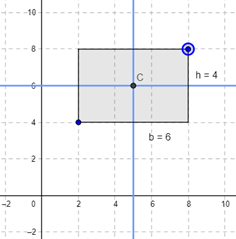Moment of Inertia of a Rectangle
Fundamentally, the moment of inertia of a given area about a given axis tells you...
If the height h of the rectangle is doubled while the base b stays the same, how will the moment of inertia about its centroidal x’ axis change?
If the base b of the rectangle is tripled while the height h stays the same, how will the moment of inertia about its centroidal x’ axis change?
If the height h of the rectangle is doubled while the base b stays the same, how will the moment of inertia about its centroidal y’ axis change?
If the rectangle is translated one unit to the right with no change in b or h, how will the moment of inertia about its centroidal x’ axis change?
For a rectangle with b = 6 and h = 4 mm, which is the correct expression for the moment of inertia about the centroidal x’ axis?
For a rectangle with b = 6 and h = 4 mm, which is the correct expression for the moment of inertia about the centroidal y’ axis?
For a square with b = 4 and h = 4 mm, which is the correct expression for the moment of inertia about the centroidal x’ axis?
Which rectangle will have a greater moment of inertia about its centroidal x’ axis? Rectangle A: b = 3, h = 4 Rectangle B: b = 9, h = 2
Which rectangle will have a greater moment of inertia about its centroidal y’ axis? Rectangle A: b = 3, h = 4 Rectangle B: b = 9, h = 2
Parallel-axis Theorem
The moment of inertia of a given cross-sectional area about any axis other than its own centroidal axis, depends on which of the following terms?
Why does Iy increase when the square is translated to the right?
If a square is translated 2 units in the +x direction and 4 units in the +y direction with no change in its cross-sectional area, will this have a greater effect on Ix or Iy?

For the above rectangle, what is the correct expression for the moment of inertia of the area about the y-axis?
For the above rectangle, what is the correct expression for the moment of inertia of the area about the -axis?